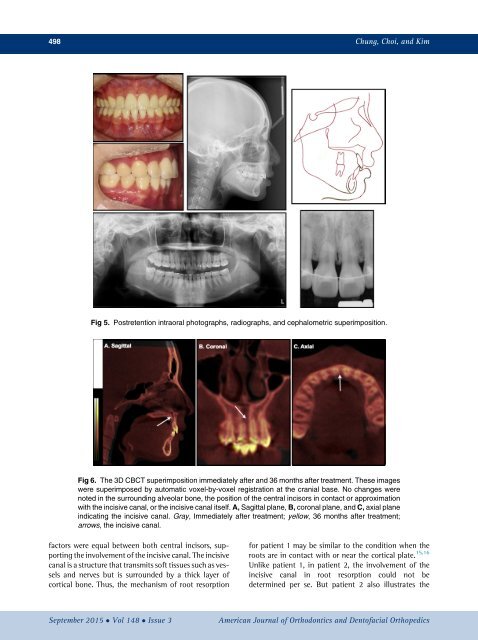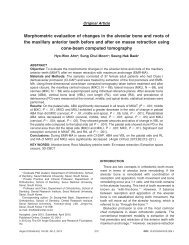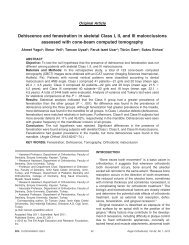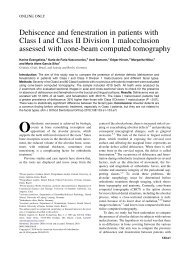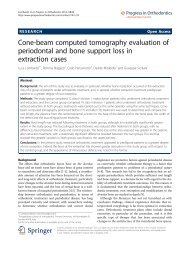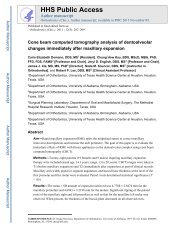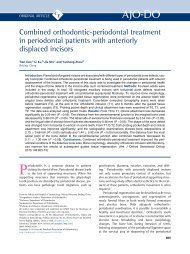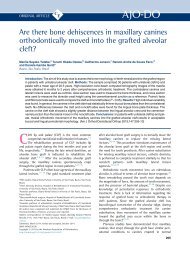Approximation and contact of the maxillary central incisor roots with the incisive canal after maximum retraction with temporary anchorage devices_ Report of 2 patients
artigos ortodontia
artigos ortodontia
You also want an ePaper? Increase the reach of your titles
YUMPU automatically turns print PDFs into web optimized ePapers that Google loves.
498 Chung, Choi, <strong>and</strong> Kim<br />
Fig 5. Postretention intraoral photographs, radiographs, <strong>and</strong> cephalometric superimposition.<br />
Fig 6. The 3D CBCT superimposition immediately <strong>after</strong> <strong>and</strong> 36 months <strong>after</strong> treatment. These images<br />
were superimposed by automatic voxel-by-voxel registration at <strong>the</strong> cranial base. No changes were<br />
noted in <strong>the</strong> surrounding alveolar bone, <strong>the</strong> position <strong>of</strong> <strong>the</strong> <strong>central</strong> <strong>incisor</strong>s in <strong>contact</strong> or approximation<br />
<strong>with</strong> <strong>the</strong> <strong>incisive</strong> <strong>canal</strong>, or <strong>the</strong> <strong>incisive</strong> <strong>canal</strong> itself. A, Sagittal plane, B, coronal plane, <strong>and</strong> C, axial plane<br />
indicating <strong>the</strong> <strong>incisive</strong> <strong>canal</strong>. Gray, Immediately <strong>after</strong> treatment; yellow, 36 months <strong>after</strong> treatment;<br />
arrows, <strong>the</strong> <strong>incisive</strong> <strong>canal</strong>.<br />
factors were equal between both <strong>central</strong> <strong>incisor</strong>s, supporting<br />
<strong>the</strong> involvement <strong>of</strong> <strong>the</strong> <strong>incisive</strong> <strong>canal</strong>. The <strong>incisive</strong><br />
<strong>canal</strong> is a structure that transmits s<strong>of</strong>t tissues such as vessels<br />
<strong>and</strong> nerves but is surrounded by a thick layer <strong>of</strong><br />
cortical bone. Thus, <strong>the</strong> mechanism <strong>of</strong> root resorption<br />
for patient 1 may be similar to <strong>the</strong> condition when <strong>the</strong><br />
<strong>roots</strong> are in <strong>contact</strong> <strong>with</strong> or near <strong>the</strong> cortical plate. 15,16<br />
Unlike patient 1, in patient 2, <strong>the</strong> involvement <strong>of</strong> <strong>the</strong><br />
<strong>incisive</strong> <strong>canal</strong> in root resorption could not be<br />
determined per se. But patient 2 also illustrates <strong>the</strong><br />
September 2015 Vol 148 Issue 3<br />
American Journal <strong>of</strong> Orthodontics <strong>and</strong> Dent<strong>of</strong>acial Orthopedics


